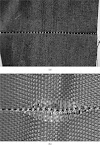SINGING PROCESS IN TEXTILE INDUSTRY
Objects :- The aim of singing is to burn off the short protruding fibres & hairs from the Fabric surface to improve the lustre, smoothness & Overall appearance of the textile material.
Sizing process produces hairiness in yarn. Lower is the count more is the degree of hairiness.
Advantages of singing:
1. It improves the end use and bearing property of the textile.
2. The burning off of the protruding fibres results in the clean surface which gives more clear structure of the fabric.
3. Singing reduces the fogginess caused by differing reflection of the light by the protruding fibres. Thus lustre is improved and the dyed fabric appears bright.
4. Singing reduces pilling tendency of synthetic and cellulosic blended fabric.
5. Unsinged fabric soiled more easily than the singed fabric.
6. In the case of printing, better sharp patterns are obtained on the singed fabric.
7. Singeing process facilitate and speeds up the desizing process if the fabric is immediately immersed in the desizing solution after sensing.
Advantages of singing:
1. Uneven singing effect can cause streaks when the fabric is dyed for formation of bubbles when fabric is finished.
2. There is possibility to thermal damage to temperature sensitive fibres like polyester.
3. In the case of cotton singeing is done at grey stage, but in the case of its blends with synthetic, singing at grey stage is not advisable since the small pills or bids of the synthetic fibres absorbs the dye during dyeing and give spacing appearance effect.
4. Stopping of the machine in between can cause heat bars marks on the fabric, also the creases during singing produce streaks, which is magnified after dying of the fabric.
5. When singing is done after drying it, heat can cause colour loss from the polyester portion of the blends because of sublimation of dyes.
6. There may be reduction in the tearing strength due to over singing.
Types of singing
1. Hot Plates singing
The machine consists of two or three curved copper plates that are kept a red-hot by means of heating arrangement under the plates.
Only one side of fabric is singed.
For other side of the fabric, we need to reverse the process.
Advantages:
a. Speed of the machine is high, so the production is more.
b. This method suitable for backfilling finishing process.
Disadvantages:
a. Fibre ends in the interstices of warp and weft are not singed, also only one side of the fabric is getting singed in one passage of the fabric.
b. It producers and decide lecture due to the frictional contact with the hot plate.
c. It causes of uneven singing due to difficulty in maintaining temperature of the plates.
2. Roller singing
In this process Instead of hot plates a large cylinder or roller is used. The inside of cylinder is heated to maintain the outer surface temperature.
3. Gas singing
• In the case of gas singeing four gas burners are used for singing, two for face side of the fabric And Two for reverse side fabric.
• This Berners arrangement is equipped with an exhauster i.e. closed chamber.
• Depending on the quality, the flame height of the burner is adjusted. E.g. for delicate qualities less height of the flame is kept and for the dense or heavy qualities the flame height can be increased.
• After singing, water is sprinkled on the fabric to lower down the temperature of the fabric when it passes through squeezing roller and further desizing.
• After singing, immediately desizing is to be carried out, it can be immersed in the desizing bath followed by steaming.
Advantages:
a. Both sides of the fabric are singed simultaneously
b. Uniform singing of the fabric is obtained.
c. They will be not be any problem of unwanted lustre since the fabric is not in contact with metal surface.
d. Fibres in the interstices in warp and weft threads are burned effectively.
e. Machine speed is high i.e. 80 to 125 metre per minute. Thus production is more.
f. Flame height as well as width can be controlled dependent on the quality of the fabric and width of the fabric.
g. Different varieties of the fabric can be singed conveniently.
Disadvantages:
a. There is great risk of fire.
b. Careful monitoring of singing process is required.
Precautions:
a. Arrangement must be made such that the supply of the gas to the burner is automatically turn off in case the mixture of gas and air doesn’t burn or if for any reason the fabric fails to move.
b. Suitable arrangement must be made to the flame size and machine speed for inflammable fibres e.g. nylon, polyester.
c. The fabric taken for singeing should be dry.
d. The speed of the fabric is measured with a speed monitoring device.
e. Temperature of the singed fabric surface is measured frequently with thermostat arrangement.












0 Comments
If you have any doubts, please don't hesitate to ask